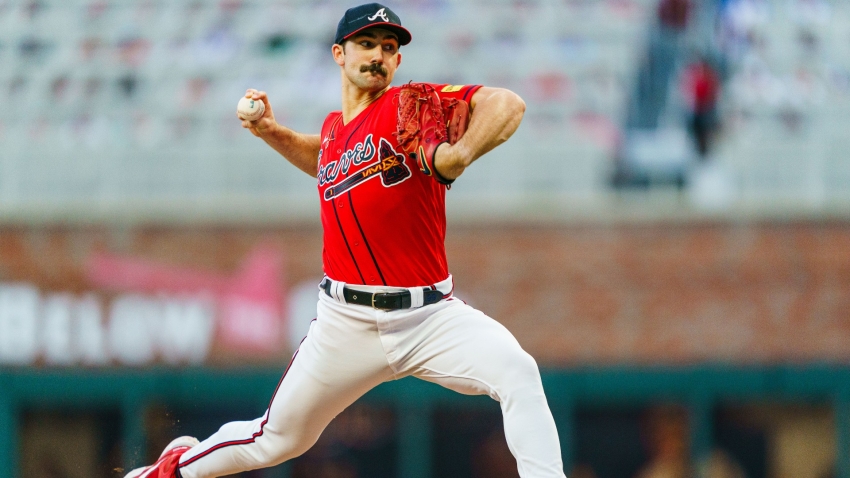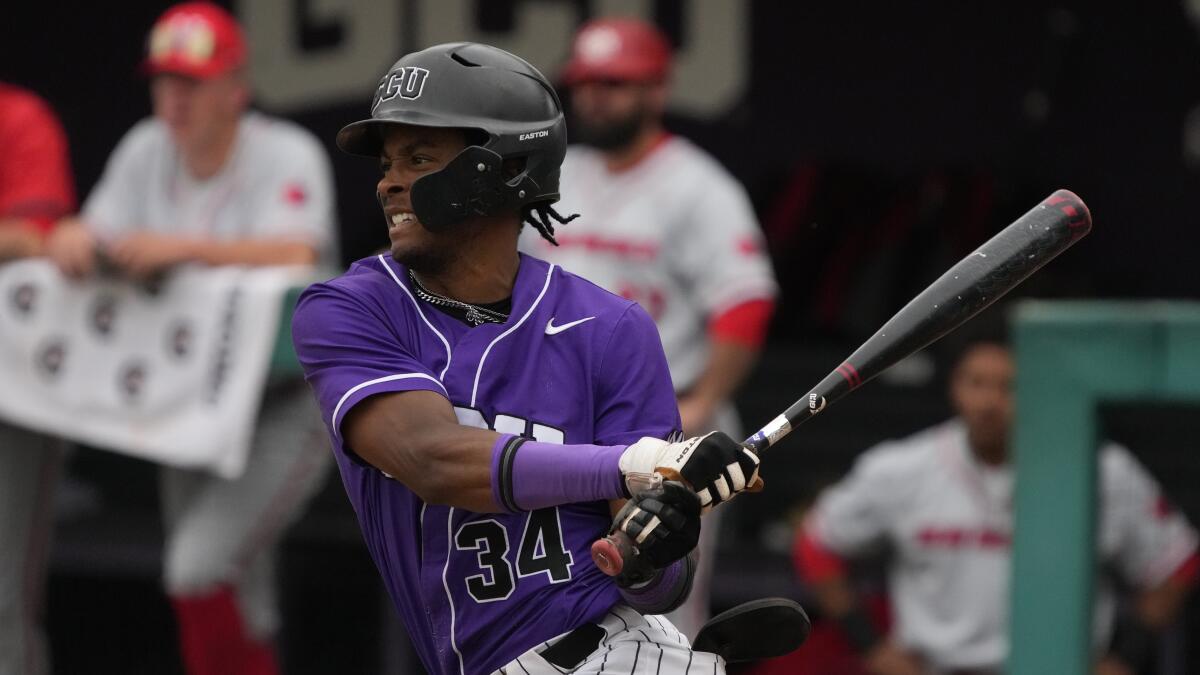A shutout in baseball is when one team prevents the other from scoring any runs. It showcases the defensive team’s pitching and fielding prowess.
Achieving a shutout in baseball is a notable feat, lauded for the skillful coordination between a pitcher and the team’s defense. It’s an indicator of a game dominated by one team, with the pitching staff often stealing the spotlight for their ability to stifle the opposing team’s offense.
Shutouts are as much a psychological win as they are a statistical one, sending a strong message to opponents about the winning team’s defensive capabilities. Fans and analysts often use the shutout as a benchmark for pitching excellence, while teams strive for them to galvanize their standing and momentum within the league. The term itself is straightforward, yet it holds weight in the hearts of baseball enthusiasts who appreciate a game well-defended.
The Essence Of A Shutout
The Essence of a Shutout in baseball evokes images of dominant pitchers and a team’s defensive mastery. It is a crowning achievement for any pitcher, symbolizing a game where the opposing team fails to score a single run. Let’s delve into what makes a shutout one of the most impressive feats in this sport.
The Zero-score Phenomenon
A shutout refers to a game where one team prevents the other from scoring any runs. It is a true testament to a pitcher’s skill and a team’s defensive collaboration. Achieving a shutout requires concentration and endurance. Picture a game where the scoreboard remains unaltered under the ‘runs’ column for one team. That’s the zero-score phenomenon. It’s thrilling for fans and devastating for hitters.
Shutout Vs. Complete Game
While a shutout is a remarkable accomplishment, it’s important to distinguish it from a complete game. A complete game occurs when a pitcher pitches for the entirety of the game, regardless of the score. A shutout, on the other hand, is specifically a complete game with no runs allowed. It’s the difference between simply finishing a race, and winning it without letting anyone else cross the finish line.
A table comparing shutouts and complete games:
| Feature | Shutout | Complete Game |
|---|---|---|
| Runs Allowed | Zero | Any number |
| Duration of Play | Entire game | Entire game |
| Defensive Requirement | Very high | Variable |
To summarize, a shutout in baseball is a powerful display of control and teamwork, where opposing batters are left scoreless throughout the game. This distinction between shutout and complete game underscores the impressive nature of this accomplishment.
Historical Lens On Shutouts
Examining the shutout in baseball reveals a tapestry woven with feats of pitching mastery. The term “shutout” harkens back to the early days of baseball. It occurs when a pitcher or pitchers do not allow the opposing team to score a run. This impressive achievement highlights superior command and control on the mound.
Key Moments In Baseball History
The legacy of the shutout is studded with key moments that have defined the sport’s history. From the first recorded shutout in the late 19th century to modern-day perfect games, these events have captivated fans and secured places in the record books.
- September 28, 1919: A notable early shutout when pitcher Urban Shocker of the St. Louis Browns delivered against the Chicago White Sox.
- October 8, 1956: Don Larsen of the New York Yankees pitched a perfect game in the World Series, a shutout that remains legendary.
- April 22, 1993: Chris Bosio of the Seattle Mariners etched his name in history with a no-hitter, a stunning shutout.
Legendary Shutout Pitchers And Games
Many pitchers have become legends through their ability to shut out opponents. Here are some of the greats known for their shutout prowess:
| Pitcher | Shutouts | Memorable Game |
|---|---|---|
| Walter Johnson | 110 | July 1, 1920 – Against the Boston Red Sox |
| Grover Cleveland Alexander | 90 | May 5, 1915 – Against the St. Louis Browns |
| Nolan Ryan | 61 | May 1, 1991 – Seventh career no-hitter |
Each pitcher’s unique style, unyielding determination, and a knack for silencing opposition bats have crafted shutout stories etched in the annals of baseball history.
Breaking Down The Shutout
Welcome to ‘Breaking Down the Shutout’, where we dive deep into one of baseball’s most impressive feats. A shutout is not just another win; it’s a badge of honor for a pitcher, a testament to a game dominated from start to finish. Let’s dissect what goes into a shutout and the glory it brings to the mound.
Components Of A Scoreless Game
A shutout, in its core, is a game where one team prevents the other from scoring any runs. It’s a zero on the scoreboard that represents perfect harmony between a pitcher’s skill and the defense’s expertise. Here are the key elements:
- Pitcher’s performance: Precise throws, strikeouts, and smart pitching.
- Team defense: Infield and outfield players must make no errors.
- Game strategy: The right calls from a catcher and coach matter a lot.
Crediting A Pitcher With A Shutout
A shutout is a crown jewel in a pitcher’s career. It’s recorded when a pitcher, or pitchers, complete a game without letting the opponent score. To earn a shutout, a pitcher must:
- Play the entire game for a solo shutout or, for multiple pitchers, keep the opponents scoreless.
- Display exceptional stamina and skill, making the right pitches through nine innings.
- Maintain focus, pitching all outs of the game without substitutions.
A shutout also particularly praises the pitcher’s ability to outsmart hitters, making it a notable achievement in their stats. Tracking shutouts helps fans recognize expert pitchers easily.
Pitching Mastery: The Shutout
A shutout in baseball is a feather in the cap for any pitcher. It means they were skillful enough to stop the other team from scoring. Achieving a shutout is not just about throwing strikes. It involves intellect, endurance, and a deep understanding of the game.
Pitching Strategies For Shutouts
To achieve a shutout, pitchers use different strategies. These planned approaches keep hitters guessing. Here’s how they do it:
- Mix up pitches: Variety is key. Use fastballs, curveballs, and sliders.
- Control the zone: Aim for the corners. Make it hard for hitters to connect.
- Study batters: Know their weaknesses. Pitch to those weak spots.
- Keep calm under pressure: Stay cool even when hitters get on base.
- Work with the catcher: Trust their calls and signals. It’s a team effort.
Mental And Physical Aspects
Mind and body must be sharp to secure a shutout. Here are the essentials:
- Stamina is crucial. Train hard to last nine innings.
- Focus is key. Keep your head in the game. Avoid distractions.
- Confidence makes a difference. Believe you can dominate the game.
- Health matters. Eat well, sleep enough, and stay fit for peak performance.
Without these, pitching a shutout is tough. Take care of your mind and body.
Shutouts In The Stat Books
In baseball, a shutout is a feather in a pitcher’s cap. A shutout occurs when a team prevents the other from scoring in a game. This stunning achievement goes into the stat books, marking a pitcher’s skill and control. Let’s dig into the impact of shutouts on player statistics and their record books.
Significance In Player Statistics
Shutouts tell a tale of dominance. They speak volumes about a pitcher’s prowess. A shutout is more than just a zero on the scoreboard; it’s a testament to a pitcher’s ability to outsmart batters for an entire game.
- A shutout boosts a pitcher’s ERA (Earned Run Average).
- It reflects positively in their WHIP (Walks Plus Hits per Inning Pitched).
- Shutouts contribute to a player’s Cy Young Award considerations.
Impact On Season And Career Records
Shutouts can shape a pitcher’s season and career. They become a part of their legacy. Career shutouts can propel a pitcher into the hall of fame conversations.
| Record | Meaning | Impact |
|---|---|---|
| Single-season shutouts | Number of shutouts in a season | Sets a pitcher apart in that season |
| Career shutouts | Total shutouts over a pitcher’s career | A crucial metric for hall of fame induction |
| Team season shutouts | Shutouts by all team pitchers in a season | Reflects on the team’s overall pitching strength |

Credit: www.sportsmax.tv
Team Efforts In Shutouts
In baseball, a shutout is a true team triumph. While pitchers grab the headlines, it’s a collective effort. Understanding team contributions to shutouts reveals the sport’s collaborative nature.
Role Of Defense
Defense seals the deal in a shutout. Every player adopts a no-mistake policy. Fielders dive, leap, and sprint to convert batted balls into outs. Here’s how they do it:
- Infielders stay on their toes for sharp grounders.
- Outfielders track down fly balls, denying hits.
- Catchers manage the game, guide pitchers, and guard home plate.
Without a lock-down defense, pitchers can’t shine. Teamwork turns tough plays into game-saving moments.
Offensive Support
Offense isn’t just about scoring; it’s about momentum. Batters aim to do more than just hit home runs; they want to keep the other team on defense. Here’s how the offense backs a shutout:
- Working counts to tire out the opposing pitcher.
- Smart base running to keep the pressure on.
- Timely hitting to drive in runs and bolster the lead.
Providing run support gives a pitcher confidence. When hitters produce, a pitcher pitches with comfort and control.
Shutouts Across The Leagues
Welcome to the diverse world of baseball, a sport where dominance on the mound is celebrated with a remarkable feat known as a shutout. Delve into how this measure of pitching excellence manifests across both major and minor leagues globally. Understand the value and difficulty of a shutout in this captivating exploration.
Comparing Major And Minor Leagues
On the field of the Major League Baseball (MLB), a shutout is pitcher-perfect glory. Each shutout is a testament to a player’s skill and a team’s defensive strategy. By contrast, in the Minor Leagues, a shutout is equally significant. Here, it signals a potential major league talent. Despite the difference in spotlight and stakes, shutouts elevate pitchers in both leagues.
| League | Number of Shutouts (2022) |
|---|---|
| MLB | 237 |
| Minor Leagues | 419 |
International Shutout Perspectives
The shutout extends beyond American borders. Countries like Japan, with the Nippon Professional Baseball, treat shutouts as milestones for a pitcher’s career. Latin America’s leagues, known for vibrant baseball cultures, also honor pitchers who achieve shutouts. They serve as bridges for talents eager to join the MLB ranks or shine on international platforms.
- Japan’s NPB: Shutouts symbolize elite pitching levels
- Latin America: Shutouts enhance player reputations
- Korea’s KBO: High regard for shutout achievements
The Fans’ Experience
Welcome to the heart-pumping, edge-of-your-seat experience that baseball fans know all too well: the shutout game. The Fans’ Experience during a shutout is a blend of tension, excitement, and ultimately, exhilaration.
Shutouts From The Stands
Imagine sitting in the stands as the innings progress. Your team’s pitcher is dominating. Each strike brings a chorus of cheers. Each out, a collective breath held. A shutout is unfolding, and you are there to witness it. You feel a bond with thousands of fans, eyes glued to the diamond, hearts racing with every pitch. A shutout isn’t just a win — it’s a masterpiece, and from the stands, you’re watching an artist at work.
Celebrate The Win
As the final inning closes, the anticipation in the air is palpable. Your team’s pitcher is on the cusp of sealing a shutout. And then it happens — the last strike rings out. The stadium erupts in celebration. High-fives, cheers, and a feeling of unity wash over the crowd. You’ve just been part of something special. You walk away with stories to tell — the night you saw a shutout. It’s more than a game. It’s a memory forged in the spirit of triumph.
Handling A Shutout Loss
Imagine your favorite baseball team pitching hard, swinging with all their might, but the scoreboard still reads zero at the end. This is a shutout. It’s a tough spot for any team and handling it is vital for bouncing back.
Team Morale After Zero Scores
After a shutout, the locker room can be heavy with silence. It’s not just about loss; it’s how the team regroups. Team spirit can dip, but it’s not permanent. A shutout tests resilience more than skill.
- Encourage open conversations about the game
- Highlight positive moments and efforts
- Plan group activities to strengthen bonds
Leadership is key. Coaches and captains must step up to retain unity and focus.
Bouncing Back From A Shutout Loss
Teams that rebound from zero scores share a common trait: grit. Here’s how they do it:
- They review game footage in detail
- Identify weakness without assigning blame
- Return to training with clear objectives
A shutout isn’t the end. It’s a lesson carved into a team’s journey. Next game, watch them play with newfound resolve.

Credit: www.kxan.com
Training For Shutouts
A shutout in baseball is a feather in any pitcher’s cap. It marks a game where the opposing team fails to score a single run, highlighting a pitcher’s mastery and stamina. Achieving such a feat requires more than just talent; it demands rigorous training and a steadfast commitment to excellence. Let’s delve into the world of training for shutouts, exploring techniques and strategies that prepare pitchers to deliver these remarkable performances.
Preparing Pitchers For Excellence
Building a strong foundation is critical for pitchers aiming for shutout success. This starts with a focus on mechanics, ensuring delivery is fluid and repeatable. Physical conditioning cannot be understated, as a well-conditioned body can endure the rigors of a complete game. Here are key areas of focus:
- Fundamental Skills: Perfecting pitch grips and motions
- Mental Toughness: Developing strategies to stay focused
- Stamina Training: Enhancing endurance to last longer in games
Practice Routines And Drills
Consistent practice is the secret sauce to pitching prowess. A strategic mix of drills and simulations reinforces muscle memory and sharpens a pitcher’s command over the ball. Specific drills that target control, velocity, and situational pitching are paramount. Coaches commonly incorporate the following into practice routines:
| Drill Type | Purpose | Frequency |
|---|---|---|
| Bullpen Sessions | Refining pitch accuracy and variety | Regularly scheduled |
| Pitching to Live Batters | Simulating game scenarios | Weekly |
| Long Toss | Building arm strength | Several times a week |
Incorporating these routines builds a strong foundation; enhancing a pitcher’s ability to perform consistently, thus increasing the chances of achieving a shutout.
The Psychology Of The Shutout
In the thrilling world of baseball, a shutout stands as a testament to a team’s defensive prowess and a pitcher’s dominance. Underneath the surface, the psychology of the shutout unfolds a tale of mental strength and focus. Pitchers weave a web of control, while the opposing team grapples with mounting pressure. Understanding the psychological undertow of the shutout can add a new layer to the appreciation of this feat.
Mental Hurdles For The Opposing Team
When a team faces a potential shutout, the mental game becomes as vital as the physical. Batting against a pitcher in top form creates a palpable tension. Each inning that passes without a run scores chips away at a team’s confidence. The compounding effect of this can lead to:
- A shift in strategy, sometimes causing players to deviate from their standard approach to at-bats.
- Increased pressure on hitters, as the weight of breaking the shutout falls on each player stepping into the batter’s box.
- Rising frustration that can disrupt focus and lead to hasty decisions and mistakes.
Pitcher’s Focus During The Game
A pitcher in the midst of a shutout might as well be an artist. The focus required to paint the corners of the strike zone is immense. Maintaining this focus is a skill honed by experience and mental fortitude. During such intense moments, successful pitchers often:
- Stay in the present, taking the game one pitch at a time without getting ahead of themselves.
- Control their emotions, keeping calm and even-tempered regardless of the game’s highs and lows.
- Communicate with their catchers and coaches effectively to ensure they are sticking to the game plan.
Ultimately, a shutout is as much a mental victory as it is a physical one. The inner workings of the players’ minds during these games can be just as enthralling as the action on the field.

Credit: www.sandiegouniontribune.com
Frequently Asked Questions For What Is A Shutout In Baseball?
What Exactly Defines A Shutout In Baseball?
A shutout in baseball occurs when one team prevents the opposing team from scoring any runs throughout the entire game.
How Does A Pitcher Earn A Shutout?
A pitcher earns a shutout by completing a game without allowing the opposing team to score any runs.
Can Relievers Contribute To A Baseball Shutout?
Yes, relievers can contribute to a shutout if they maintain the opposing team’s scoreless status after replacing the starting pitcher.
What’s The Rarity Of Shutouts In Mlb Games?
Shutouts in MLB games are relatively rare, as they require dominant pitching and strong team defense throughout the game.
How Do Shutouts Impact A Player’s Statistics?
Shutouts positively impact a pitcher’s statistics, particularly lowering their earned run average (ERA) and showcasing their dominance.
Conclusion
Understanding the concept of a shutout enriches the excitement of baseball. It showcases the pitcher’s skill and team strategy at its finest. Remember, zero runs equal a dominant defense! As fans and players alike celebrate these moments, they reflect the heart of this beloved sport.
Keep cheering for those thrilling games where pitchers earn their bragging rights!


